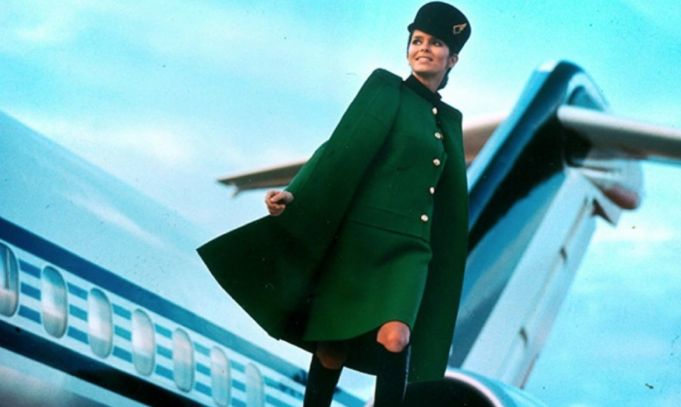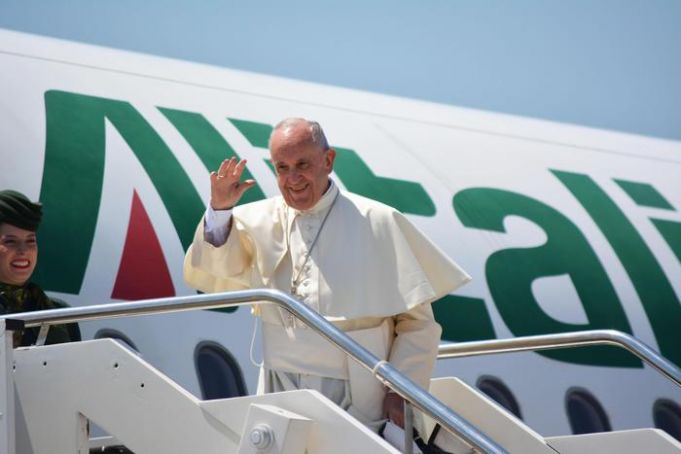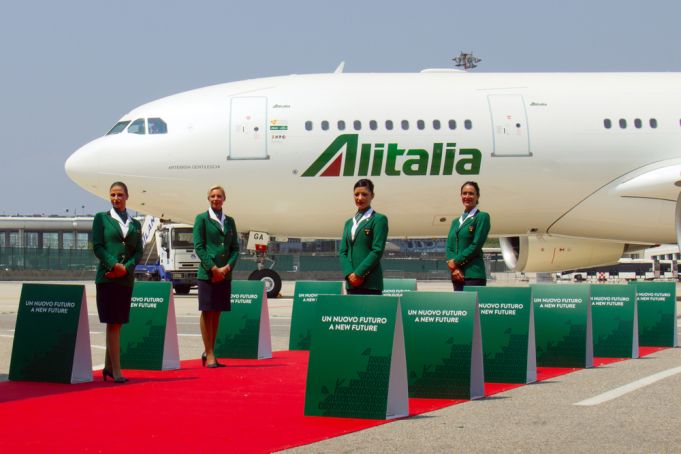Alitalia's last flight: Italy says goodbye to airline after 74 years
Alitalia lands - for good - as ITA takes off.
Alitalia will take its last flight on Thursday evening before passing the baton to Italy's new national airline, ITA, which begins operations on Friday.
The final flight, from Rome to Cagliari, brings to an end a colourful 74-year history between Italy and the troubled flag carrier.
It is a sad, bitter day for Alitalia employees, most of whom will not be re-hired by ITA when takes off on Friday, or in the years ahead.
Today is also an emotional day for many Italians who saw the now bankrupt airline and its iconic 'A' tail-wing logo as a symbol of national pride.
A brief history of Alitalia
The story began on 16 September 1946, a year after the war, when Alitalia was established as Aerolinee Italiane Internazionali, funded by the Italian government and British European Airways (BEA) in a 60/40 share arrangement.
The airline launched operations on 5 May 1947, with an inaugural flight from Turin to Catania and Rome.
Alitalia soon expanded to countries around Europe, while its first flight intercontinental flights launched in 1948, between Milan and South America.
On 31 October 1957 Alitalia merged with Linee Aeree Italiane and took on the name of Alitalia – Linee Aeree Italiane.

However it remained known by its popular name - a combination of the Italian words for wings and Italy ("ali" and "Italia").
Alitalia was ready for Rome's 1960 Olympics and the newly-opened Fiumicino airport where it had a base.
By 1960 it was carrying one million passengers and became the first European airline to move fully into the jet era.
Alitalia had green, white and red uniforms designed by Giorgio Armani and it was the first airline in the world to carry a pope, with a papal aircraft known as Shepherd One.
From its initial 10,000 passengers in 1947, Alitalia was carrying 25 million passengers annually by the 1990s.

The state-owned airline struggled with profitability but was always bailed out by the government.
This financial support stopped in 2006 when the EU called an end to the practice, leaving the airline struggling.
Over subsequent years Alitalia went through various failed investment deals as it attempted to cut costs, all in the face of looming bankruptcy and union strikes.

The airline continued to receive bailouts from the Italian government in the form of emergency loans, in violation of EU rules, with the final sting in the tail being the coronavirus pandemic and Italy's lockdowns.
The airline ceased selling tickets on 25 August 2021, pending the launch of ITA (Italia Trasporto Aereo (ITA) on 15 October.
The post-Alitalia era
ITA, which is fully owned by the Italian government, will start off with a fleet of 52 planes, with the number of aircraft rising to 105 by the end of 2025.
The new flag carrier will inherit only part of Alitalia's flight slots, obtaining 85 per cent of Alitalia slots at Milan's Linate airport and 43 per cent of slots at Fiumicino in Rome.
As for the 11,000 employees of Alitalia, 2,800 will be employed in ITA's aviation unit this year, possibly rising to 5,750 in 2025 if the company wins the tender for Alitalia’s ground handling and maintenance divisions.
ITA will initially serve 44 destinations when it begins operations tomorrow, with this number set to rise to 74 by 2025.

















